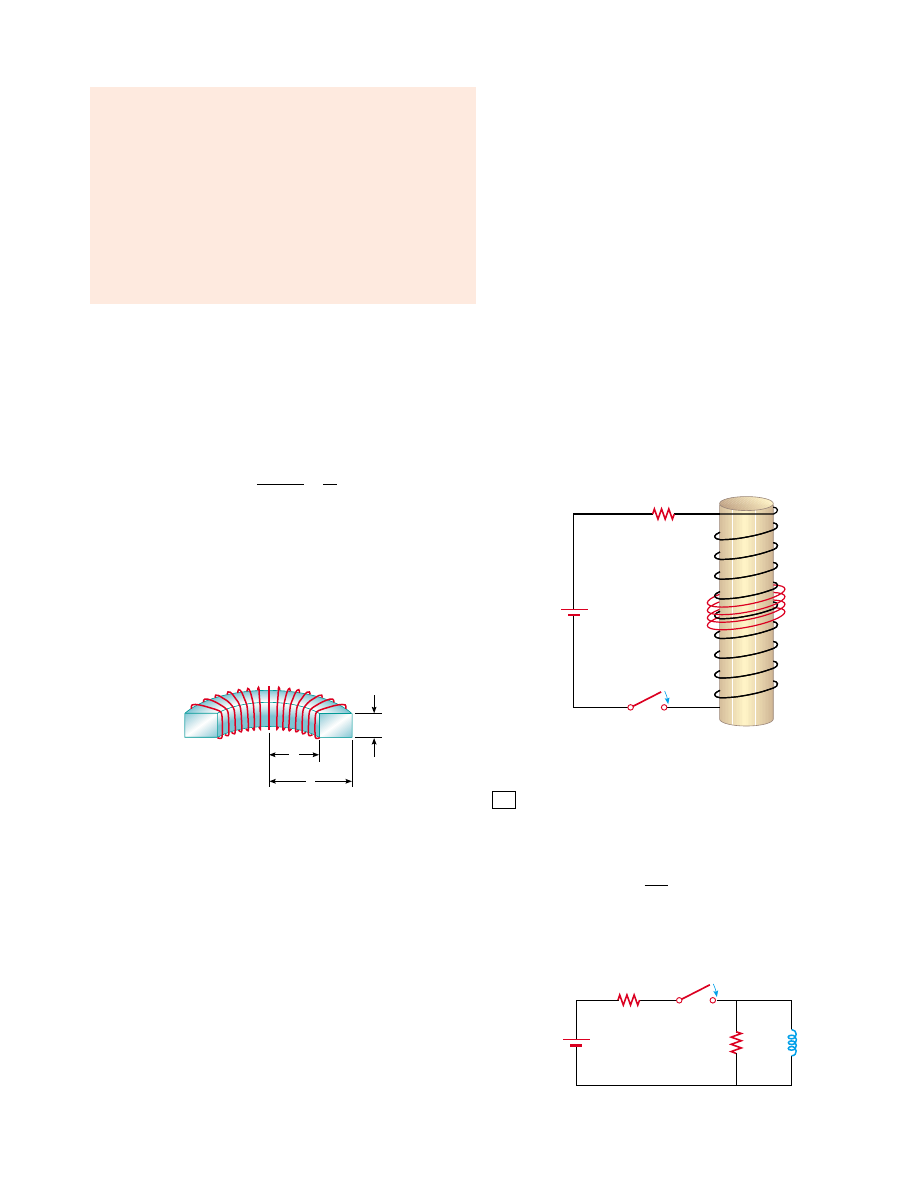Physics For Scientists And Engineers 6E - part 258

Problems
1029
voltage across the inductor as a function of time, (b) the
voltage across the capacitor as a function of time, and
(c) the time when the energy stored in the capacitor first
exceeds that in the inductor.
62.
An inductor having inductance L and a capacitor having
capacitance C are connected in series. The current in the
circuit increases linearly in time as described by I " Kt,
where K is a constant. The capacitor is initially uncharged.
Determine (a) the voltage across the inductor as a
function of time, (b) the voltage across the capacitor as a
function of time, and (c) the time when the energy stored
in the capacitor first exceeds that in the inductor.
63.
A capacitor in a series LC circuit has an initial charge Q
and is being discharged. Find, in terms of L and C, the flux
through each of the N turns in the coil, when the charge
on the capacitor is Q /2.
64.
The toroid in Figure P32.64 consists of N turns and has a
rectangular cross section. Its inner and outer radii are a
and b, respectively. (a) Show that the inductance of the
toroid is
(b) Using this result, compute the self-inductance of a
500-turn toroid for which a " 10.0 cm, b " 12.0 cm, and
h " 1.00 cm. (c) What If? In Problem 12, an approximate
expression for the inductance of a toroid with R -- r
was derived. To get a feel for the accuracy of that result,
use the expression in Problem 12 to compute the approxi-
mate inductance of the toroid described in part
(b). Compare the result with the answer to part (b).
L "
'
0
N
2
h
2)
ln
b
a
be used for connections. (a) How many turns of this wire
can be wrapped around the rod? For an accurate answer
you should add the diameter of the wire to the diameter of
the rod in determining the circumference of each turn.
Also note that the wire spirals diagonally along the surface
of the rod. (b) What is the resistance of this inductor?
(c) What is its inductance?
67.
A wire of nonmagnetic material, with radius R, carries
current uniformly distributed over its cross section. The
total current carried by the wire is I. Show that the mag-
netic energy per unit length inside the wire is '
0
I
2
/16).
68.
An 820-turn wire coil of resistance 24.0 . is placed around
a 12 500-turn solenoid 7.00 cm long, as shown in Figure
P32.68. Both coil and solenoid have cross-sectional areas of
1.00 ( 10
#
4
m
2
. (a) How long does it take the solenoid
current to reach 63.2% of its maximum value? Determine
(b) the average back emf caused by the self-inductance of
the solenoid during this time interval, (c) the average rate
of change in magnetic flux through the coil during this
time interval, and (d) the magnitude of the average
induced current in the coil.
h
a
b
Figure P32.64
12 500
turns
14.0
Ω
60.0 V
S
+
–
24.0
Ω
820 turns
Figure P32.68
R
1
S
R
2
L
ε
Figure P32.69 Problems 69 and 70.
65.
(a) A flat circular coil does not really produce a uniform
magnetic field in the area it encloses, but estimate the self-
inductance of a flat, compact circular coil, with radius R
and N turns, by assuming that the field at its center is uni-
form over its area. (b) A circuit on a laboratory table
consists of a 1.5-volt battery, a 270-. resistor, a switch, and
three 30-cm-long patch cords connecting them. Suppose
the circuit is arranged to be circular. Think of it as a flat
coil with one turn. Compute the order of magnitude of its
self-inductance and (c) of the time constant describing
how fast the current increases when you close the switch.
66.
A soft iron rod ('
m
"
800'
0
) is used as the core of a sole-
noid. The rod has a diameter of 24.0 mm and is 10.0 cm
long. A 10.0-m piece of 22-gauge copper wire (diameter "
0.644 mm) is wrapped around the rod in a single uniform
layer, except for a 10.0-cm length at each end, which is to
At t " 0, the open switch in Figure P32.69 is closed. By
using Kirchhoff’s rules for the instantaneous currents and
voltages in this two-loop circuit, show that the current in
the inductor at time t - 0 is
where R 3 " R
1
R
2
/(R
1
,
R
2
).
I (t ) "
!
R
1
[1 # e
#
(R 3/L)t
]
69.